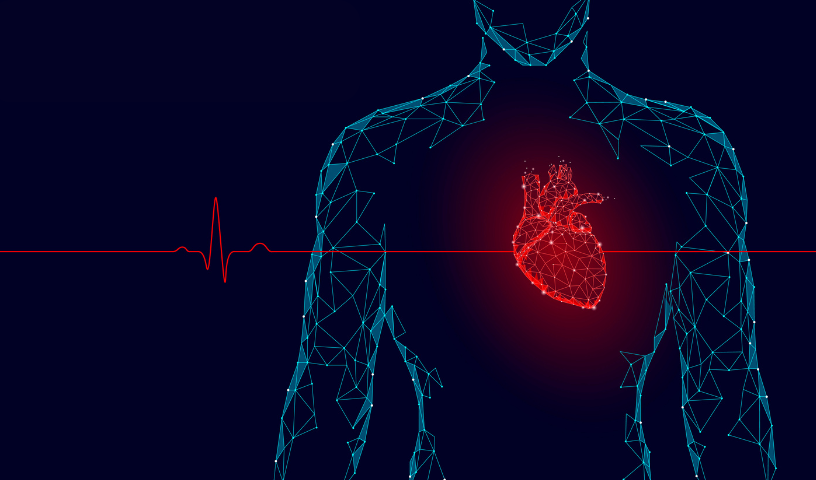Signs you should see a Cardiologist near me now
Understanding the Importance of Cardiology in Modern Healthcare Solutions
Cardiology plays an important function in contemporary healthcare, especially as heart problem proceeds to be the leading root cause of death worldwide. Developments in diagnostics and treatment have actually transformed client treatment, allowing earlier interventions and improved results. In addition, the shift in the direction of preventative cardiology encourages individuals to handle their health proactively. As modern technology continues to progress, the integration of cutting-edge options might better redefine cardiology's effect on public wellness, prompting a closer exam of emerging trends and their effects.
The Occurrence of Heart Problem and Its Effect on Public Health
Heart condition remains the leading reason of fatality internationally, its influence prolongs much beyond private clients to affect public wellness systems and economic situations. The high occurrence of heart illness places a substantial pressure on healthcare sources, necessitating increased funding for avoidance, treatment, and recovery programs. Public health and wellness efforts need to deal with risk factors such as weight problems, smoking, and sedentary way of livings, which contribute considerably to the increasing occurrence of heart conditions.Moreover, the economic burden linked with cardiovascular disease is immense, including not only direct clinical costs but likewise indirect costs connected to shed performance and early death. Communities deal with difficulties in handling these expenses, often resulting in differences in healthcare access and results. As the populace ages and lifestyle-related risks continue to rise, the seriousness for effective cardiology interventions comes to be critical. Dealing with heart disease is not only a matter of private wellness but likewise a crucial public health priority.
Developments in Cardiac Diagnostics and Imaging Techniques
Recent innovations in heart diagnostics and imaging strategies have actually reinvented the field of cardiology, boosting the capacity to check and find heart problem. Methods such as cardiac MRI, CT angiography, and echocardiography have ended up being significantly sophisticated, supplying comprehensive photos of heart frameworks and functions. These methods enable for the early recognition of conditions like coronary artery condition, heart failing, and valvular disorders.Moreover, developments in non-invasive diagnostics, such as wearable innovation and remote surveillance devices, have actually empowered people and medical care suppliers. These devices help with real-time monitoring of heart rhythms and other important indicators, bring about timely treatments. In addition, synthetic knowledge is being incorporated into imaging evaluation, enhancing accuracy and effectiveness in diagnosis.
Advancements in Therapy Options for Heart Issues
Current advancements in cardiology have actually brought about substantial innovations in treatment choices for heart problems. These include sophisticated surgical strategies that improve step-by-step outcomes and emerging medicines that use brand-new opportunities for therapy. As the area advances, these advancements play a vital role in boosting person treatment and outcomes.
Advanced Surgical Techniques
Innovations in surgical techniques have changed the landscape of cardiology, offering new hope for people with heart conditions. Minimally invasive treatments, such as catheter-based interventions, have substantially reduced healing times and hospital keeps. Strategies like robotic-assisted surgery boost accuracy, enabling cosmetic surgeons to browse intricate physiological frameworks with greater precision. Advancements in imaging innovation help with real-time visualization during treatments, enhancing outcomes. Transcatheter aortic valve substitute (TAVR) exemplifies an advancement in treating aortic constriction, enabling valve replacement without open-heart surgical treatment. In addition, hybrid techniques that combine catheter-based and medical approaches give tailored options for various heart problems. These innovative surgical strategies not only improve individual safety yet likewise expand treatment options, highlighting the essential role of innovation in modern cardiology methods.
Arising Treatments and medicines
As the landscape of cardiology remains to progress, emerging therapies and medicines play a crucial role in improving therapy alternatives for heart conditions. Technologies such as novel anticoagulants and progressed lipid-lowering agents have changed the administration of cardiovascular diseases, significantly reducing patient morbidity and death. Additionally, the development of gene therapies and regenerative medicine offers encouraging avenues for treating conditions previously regarded incurable. Professional tests are continually exposing the efficiency of these treatments, pressing the limits of standard therapies. Moreover, the assimilation of electronic wellness modern technologies assists in tailored medication, permitting customized therapy strategies based upon hereditary and lifestyle variables. Jointly, these advancements highlight the dynamic nature of cardiology, boosting person end results and redefining requirements of care in modern-day healthcare.
The Role of Preventive Cardiology in Client Care
Preventative cardiology plays a necessary function in person care by concentrating on the identification of danger aspects that add to cardiovascular disease. Through way of living alteration strategies and early detection techniques, medical care suppliers can effectively decrease the occurrence of cardiovascular occasions - Cardiology care. This proactive strategy not only boosts client outcomes but additionally promotes long-lasting wellness
Threat Aspect Identification
While heart diseases continue to be a leading source of morbidity and death worldwide, effective threat factor identification works as a foundation of preventive cardiology. Determining danger variables such as hypertension, hyperlipidemia, diabetic issues, and household background is vital for very early intervention. Healthcare professionals use various evaluating methods to review these factors, permitting customized precautionary procedures. Additionally, recognizing a person's way of life options, such as smoking and physical inactivity, better notifies danger assessments. This thorough assessment allows medical professionals to establish customized care plans aimed at mitigating dangers. By prioritizing danger element recognition, health care systems can improve patient results and minimize the total worry of heart diseases, eventually contributing to improved public health and wellness methods and source allocation.
Way Of Life Modification Methods
A multitude of researches highlights the vital duty of way of living adjustment approaches in lowering heart disease threat. These approaches include dietary changes, raised physical activity, smoking cigarettes cessation, and weight administration. By embracing a heart-healthy diet regimen rich in fruits, veggies, whole grains, and lean proteins, people can lower cholesterol levels and blood stress. Normal exercise strengthens the heart and boosts general cardio health. Additionally, giving up cigarette smoking considerably minimizes the risk of heart condition and improves healing rates for those with status quo. Weight administration further adds to cardiovascular health and wellness by minimizing various other threat factors such as diabetes and high blood pressure. Carrying out these lifestyle transforms not just promotes individual well-being but additionally acts as a cornerstone of preventive cardiology in patient treatment.
Very Early Discovery Techniques
Way of living adjustments considerably contribute to lowering heart disease dangers, but they are most reliable when coupled with very early detection techniques. Preventative cardiology highlights the significance of determining possible heart issues prior to they rise right into serious problems. Techniques such Visit Your URL as high blood pressure tracking, cholesterol testing, and advanced imaging modern technologies like echocardiograms play vital duties in examining cardiovascular health. Biomarkers and hereditary testing also boost the precision of very early discovery, enabling for tailored preventative techniques. Normal cardiac danger evaluations equip doctor to interfere proactively, potentially protecting against cardiovascular disease and strokes (Cardiologist near me). By integrating these early discovery approaches into routine treatment, individuals can benefit from prompt way of living interventions and targeted treatments, inevitably boosting and boosting outcomes lifestyle
Integrating Innovation Into Cardiology Practices
As innovations in technology continue to improve various fields, the combination of cutting-edge devices and systems right into cardiology techniques has actually become necessary for boosting patient care and outcomes. Telemedicine platforms permit cardiologists to keep track of clients remotely, enhancing accessibility to care while minimizing the worry on medical care centers. Wearable tools, such as smartwatches, make it possible for continual heart price surveillance, signaling both medical professionals and individuals to prospective problems in real-time. Furthermore, synthetic intelligence (AI) is being utilized to analyze vast quantities of heart data, assisting in early medical diagnosis and tailored treatment plans. Advanced imaging strategies, consisting of 3D echocardiography, improve visualization of heart structures, see post leading to more specific treatments. Electronic health records (EHRs) streamline person details administration, guaranteeing that cardiologists have immediate accessibility to important information. With each other, these technological advancements are changing cardiology, promoting aggressive administration and improved wellness outcomes for patients with cardio conditions.
The Significance of Person Education and Involvement
Client education and learning and engagement play a crucial role in the administration of cardio health. By furnishing patients with understanding regarding their conditions, treatment alternatives, and lifestyle modifications, doctor encourage people to take an energetic role in their treatment. This positive strategy can lead to enhanced adherence to recommended drugs, nutritional changes, and workout regimens, ultimately decreasing the danger of complications.Engagement additionally fosters a solid patient-provider relationship, urging open interaction and count on. When individuals feel educated and included, they are more probable to voice issues and ask concerns, which can lead to far better clinical outcomes. In addition, instructional resources, such as workshops or electronic platforms, can enhance understanding and promote self-management techniques. Generally, focusing on individual education and engagement is important for enhancing cardiovascular health, improving quality of life, and reducing healthcare prices linked with cardio illness.
Future Patterns in Cardiology and Their Prospective Impact

Often Asked Questions
What Lifestyle Adjustments Can Minimize Cardiovascular Disease Risk?
The existing concern addresses lifestyle adjustments that can substantially decrease cardiovascular disease threat. Cardiologist near me. Taking on a balanced diet regimen, participating in regular physical task, preserving a healthy and balanced weight, handling stress, and avoiding tobacco can notably enhance cardiovascular wellness
How Can I Identify Early Indicators of Heart Problems?
Identifying early indicators of heart problems includes monitoring signs such as chest pain, lack of breath, fatigue, and uneven heartbeat. Timely recognition of these signs can motivate necessary clinical evaluation and intervention for far better outcomes.
What Are the Differences In Between Cardiologists and Heart Surgeons?
The differences between cardiologists and heart surgeons depend on their duties; cardiologists primarily manage and identify heart problems through non-invasive techniques, while heart doctors carry out surgeries to deal with architectural heart issues. Each plays an important, distinctive duty.

How Frequently Should I Obtain My Heart Health And Wellness Checked?
The frequency of heart medical examination differs based on individual danger elements. Generally, grownups ought to undergo analyses every one to 2 years, while those with current conditions might require even more regular assessments as suggested by health care specialists.
What Function Does Genetics Play in Heart Condition Risk?
Genes significantly affects heart problem threat, with familial patterns showing inherited conditions. Particular genetics can predispose people to hypertension, cholesterol problems, and other cardiovascular troubles, highlighting the importance of hereditary screening in reviewing heart health and wellness. Heart condition stays the leading reason of death internationally, its impact prolongs much beyond specific clients to influence public health systems and economic climates. Public wellness initiatives need to resolve risk aspects such as excessive weight, smoking cigarettes, and sedentary way of lives, which add greatly to the increasing occurrence of heart conditions.Moreover, the financial burden associated with heart illness is enormous, incorporating not only direct clinical prices yet also indirect expenses associated to shed performance and early death. Preventative cardiology plays an important function in individual care by concentrating on the identification of threat aspects that contribute to heart illness. Man-made knowledge (AI) and equipment learning are enhancing diagnostics and individual surveillance, enabling early detection of heart conditions. The distinctions in between cardiologists and heart doctors exist in their duties; cardiologists largely detect and take care of heart problems with non-invasive methods, while cardiac cosmetic surgeons carry out surgical procedures to deal with architectural heart concerns.